HIGH FIDELITY PERSONAL AUDIO & STEREO MAGAZINE


AUDIONET PRE G2 & AMP
TRI-ART AUDIO P INTEGRATED

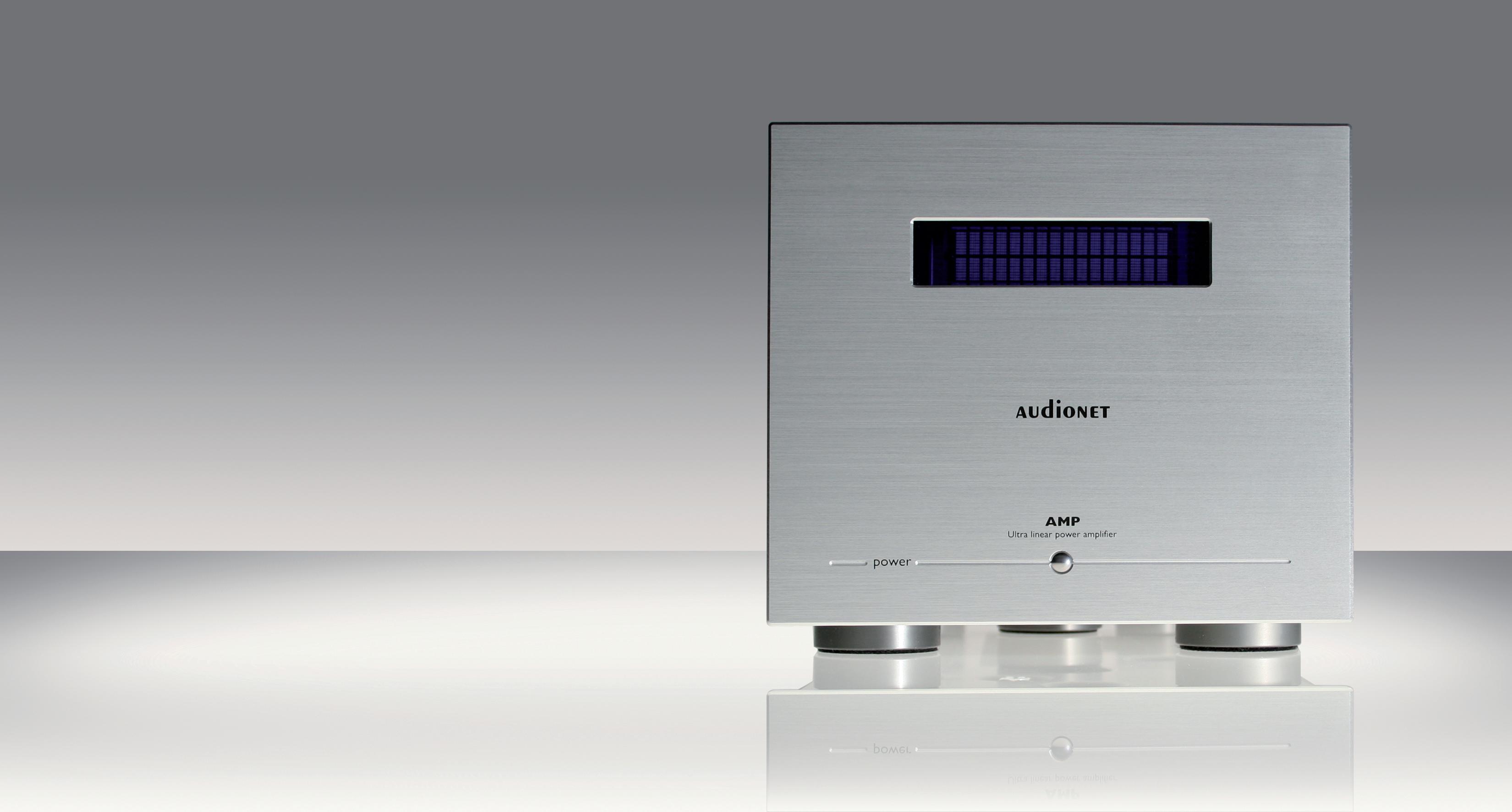
MERASON FRÉROT & POW1


VERITY OTELLO
SIMAUDIO ACE & VOICE 22 AND MORE…

MARCH 2023 I1
AudioKeyREVIEWS !
ENGLISH
Canada
Aries Cerat
ASR Audio Pink Faun
Rockna
Inakustik
Vicoustic
Tri Art
Horns by Auto Tech
Iso Acoustics


Music is art, art is music.

 Brassai - Pont Neuf
Brassai - Pont Neuf






INSIDE THIS ISSUE… ART MUSICIANS 82 36 24 36

audiokeyreviewsCA.com Copyright AudioKeyReviews 2023 15 24 36 48 54 68 80 HI-FI REVIEWS EDITOR'S LETTER TRI-ART P-SERIES INTEGRATED AUDIONET G2 PRE & AMP KATHE LIEBER - GRACE NOTES MERASON FRÉROT & POW1 SILENT ANGEL MUNICH MI & FORESTER F1 VERITY OTELLO - PREVIEW INTERVIEWS MUSIC TABLE OF CONTENTS
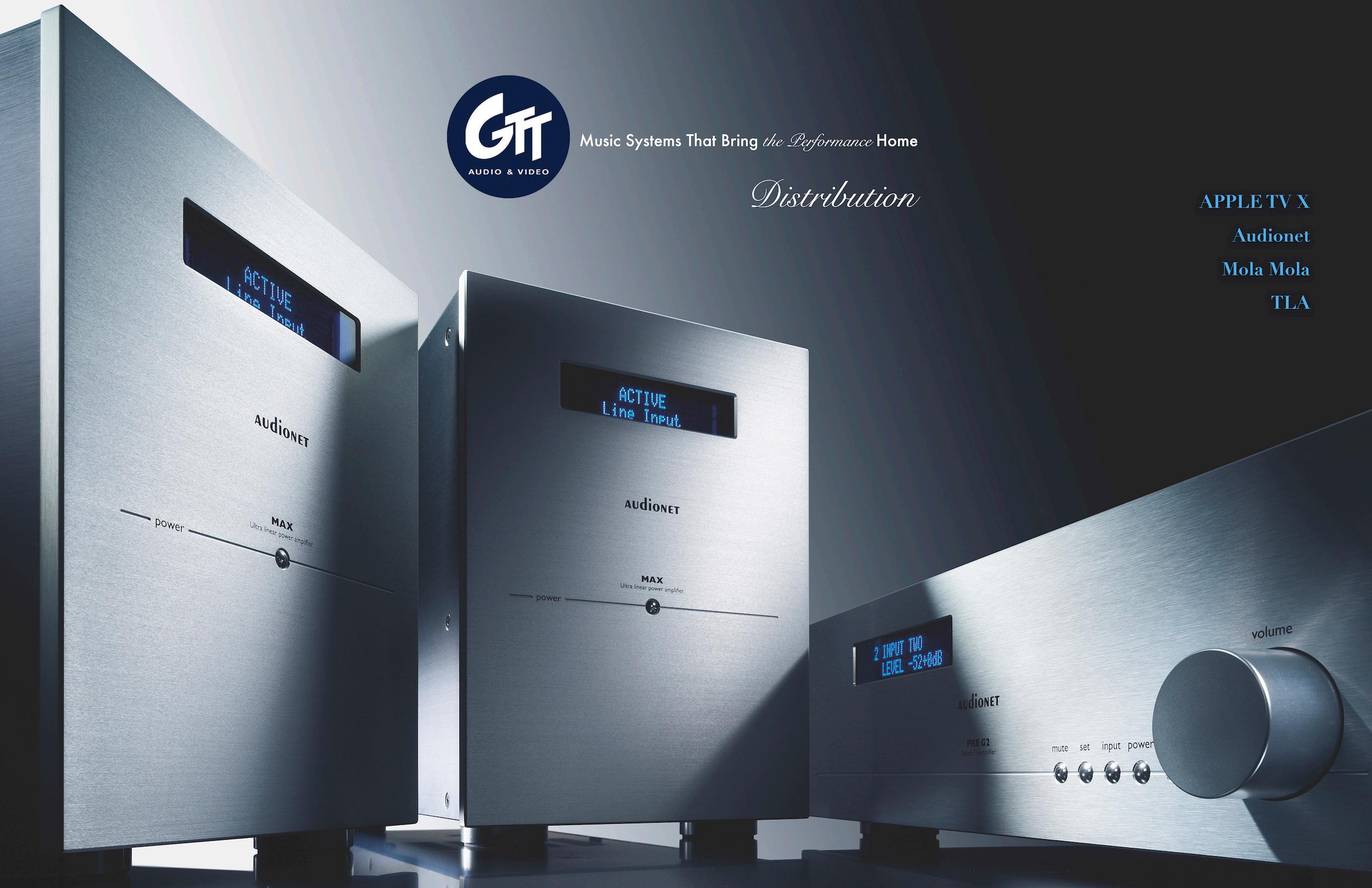

CANADA
MUSIC REVIEWS
THEATER
86 92 94
SIMAUDIO ACE AND VOICE 22 - PREVIEW IN THE NEXT ISSUE
REVIEWS ON OUR WEBSITE
Front Inside Cover: Vincent Van Gogh - Small Pear Tree in Blossom
Back Inside Cover: Vincent Van Gogh - Flowering Garden
The Other Art. It is my belief that the artist and the musician are not only creatives, but they access heart and soul and experience, perhaps, in the selfsame ways. My own love for art and music are inseparable. And so art, music, and those things which facilitate the music, shall share theses pages.
AUDIO VIDEO REVIEWS
LETTERS TO THE EDITOR - SEND HERE
Copyright AudioKeyReviews 2023

audiokeyreviewsCA.com

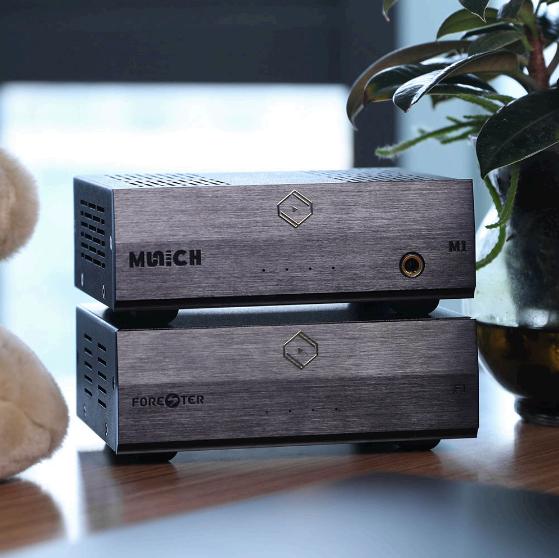
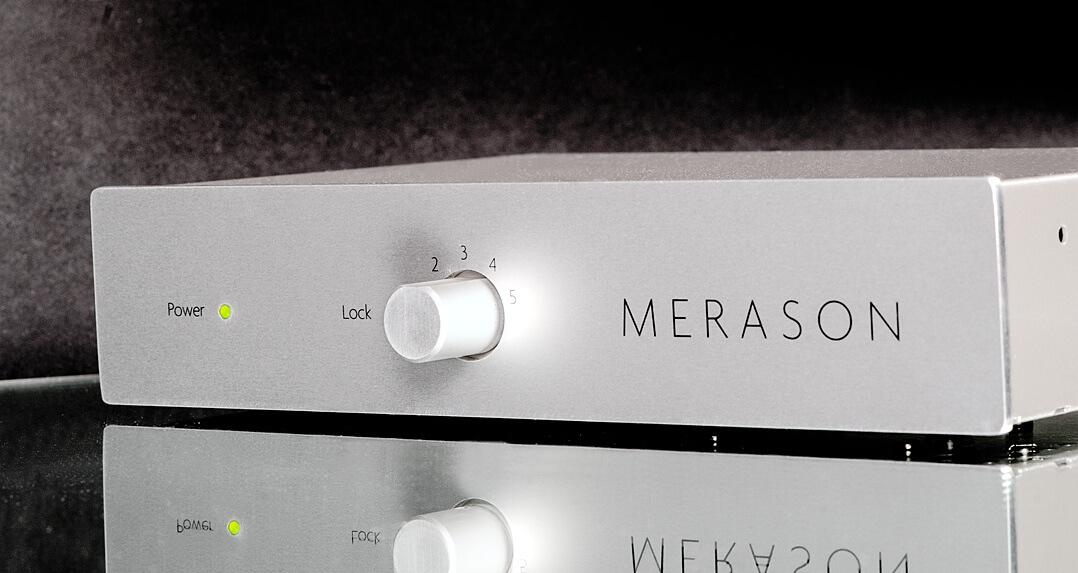
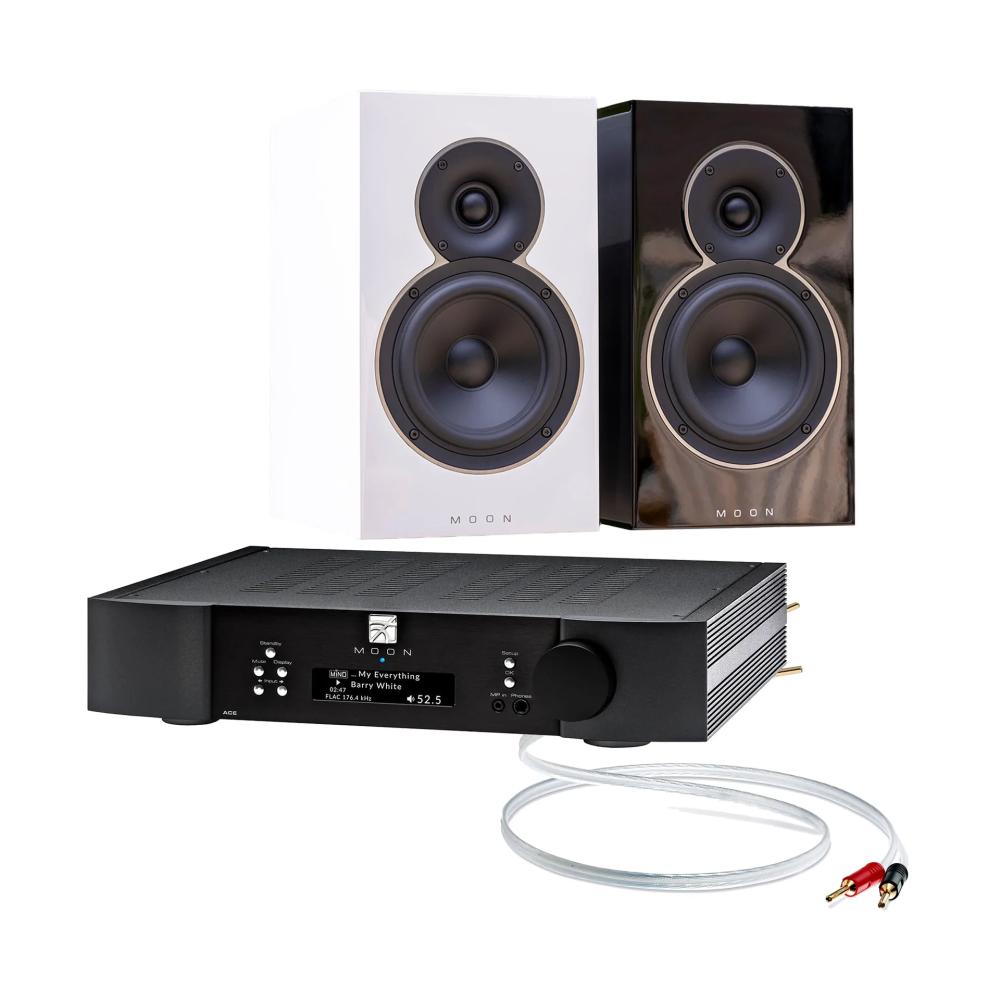
INSIDE THIS ISSUE… 86 68 54


Where Art Meets Music OPEN 5



EDITOR’s CHAIR


Welcome to the debut issue of our bilingual—English and Français—magazine, in two distinct issues— AudioKeyREVIEWS! Magazine Canada.
Having lived in Montréal for the better part of a year, I have come to see this magazine as paying homage to the wonderful time I spent there, the incredibly beautiful seasons (save winter), the beautiful people, and the remarkable, historic architecture (I took many pictures).
Montréal, when not deluged in quilts of snow, is an easy city to walk around. I almost literally walked the breadth of the city and its underground systems and tunnels. I was fascinated by the cleverly disguised malls, masquerading as mere office buildings from the street. However, once you entered the buildings, it was as if you were in another world and a wealth of shops stood before you. Brilliant.
I sat in Montréal cafes and then audio boutiques, listened to wonderful systems as I got to know several of the boutique owners, and shared meals and good wine and a whole lot of laughter. (Hello again.)
We are still very much “under construction” and finding our way as writers, reviewers, and columnists come aboard and as we align ourselves with Canada’s audio/music communities, manufacturers, distributors, retailers, and, of course, all the music lovers and audiophiles across Canada. Naturally, we seek your help to build the relationship and make it successful for all involved, while providing support and attention and respect for our Canadian confrères.
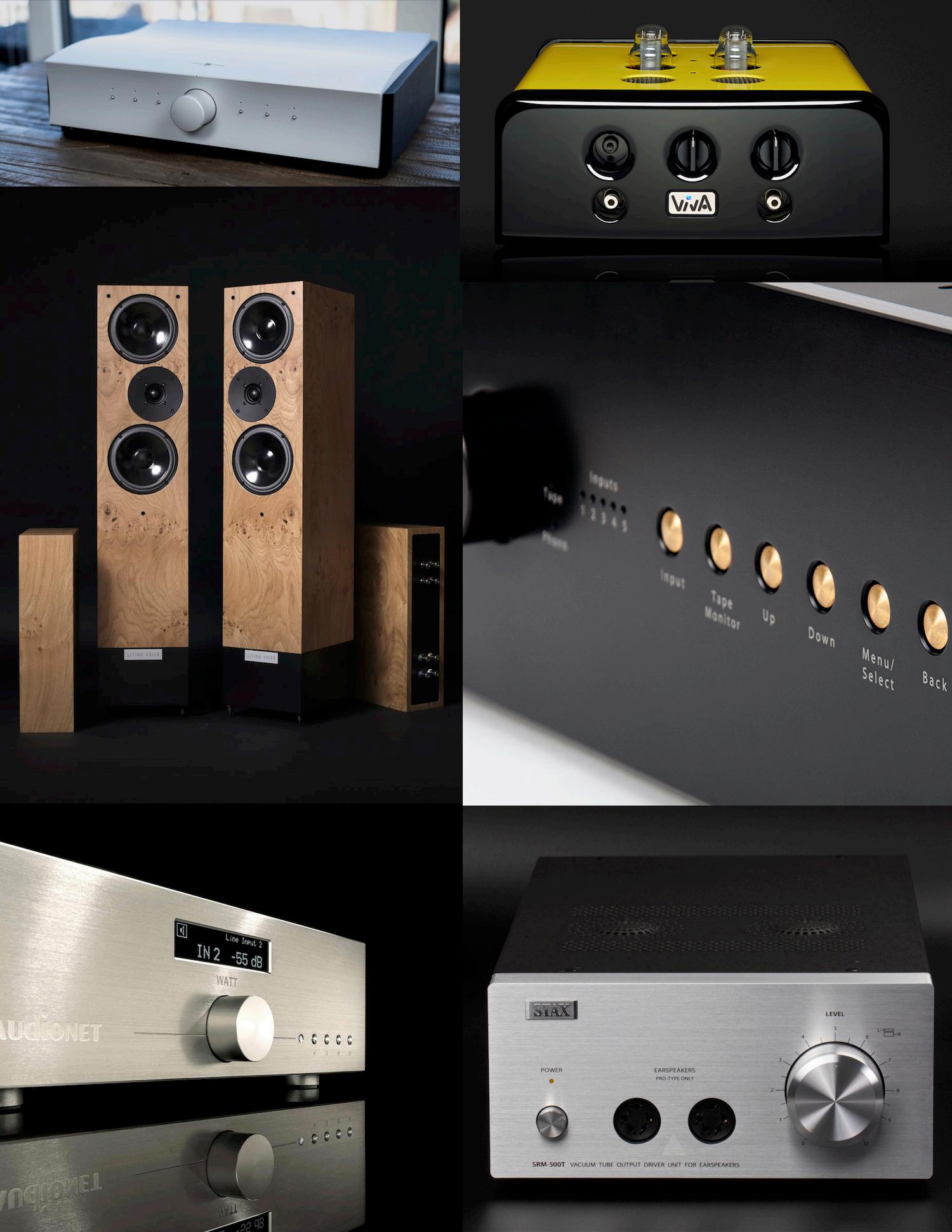
Sincerely,
K.E. Heartsong Editor-in-Chief
audiokeyreviewsCA.com
THE CREW
Publisher/Editor-in-Chief
K. E. Heartsong
Managing Editor
Kathe Lieber
Senior Editor(s)

Andre Marc
Reviewer
Charles Brown
Columnists
Kathe Lieber
Media Sales
Nabil Ahkrass
Amelia A. MASTHEAD

audiokeyreviewsCA.com

 HermanMiller
HermanMiller


Welcome audiokeyreviewsCA.com

 Paul Cezanne - The Road
Paul Cezanne - The Road



TRI-ART P-SERIES INTEGRATED
 By K. E. Heartsong
By K. E. Heartsong

TRI-ART P-SERIES INTEGRATED
As noted in the earlier review of the headphone section of the Tri-Art PSeries Integrated (Tri-Art PSI), the Tri-Art company is the brainchild of Steve

your attention for unassailed hours. And these very same Tri-Art Audio components, from source to speakers, populate Steve’s own system.
And through the combination of out-ofthe-box innovative thinking, attention to detail, utilizing nature’s highest-end materials— bamboo (nature’s carbon fibre), wool, hemp oil —Steve achieves an extremely quiet, transparent, musical, and highly engaging sound via his various components. In point of observable truth, his components will hold
compete. And the pièce de résistance—a most important thing—is that its pricing from top to bottom is a breath of fresh air, and especially so when manufacturers would rather sell “bling.”

This review brings me to the examination and review of the Tri-Art PSI as an integrated amplifier, having already reviewed its headphone amplifier.


audiokeyreviewsCA.com
 Paul Cezanne - Pommes sur un linge
Paul Cezanne - Pommes sur un linge
TRI-ART P-SERIES INTEGRATED

REFRAIN: Unlike most reviews, this review will be nonsequential, as it will start with how the equipment actually sounds and not the process of physically “undressing” it and/or laying out its various accoutrements, specifications, etc. Think of this review, then, as a non-linear movie—Memento, Kill Bill, Pulp Fiction, Eternal Sunshine of the Spotless
Note that this is not always the case, as more often than not less attention is paid to what ostensibly becomes an add-on. This is not at all the case with the Tri-Art PSI.
Well, the integrated apple does not fall very far from the headphone amplifier tree, or something to that effect. Which is to say that the Tri-Art PSI is wonderfully musical, detailed, and transparent, very much like its contained symbiont—the headphone amplifier.


Firstly, the Tri-Art PSI was, well, handicapped. That is to say, there were no “appropriately priced” speakers in-house, so it had to “play” with the big boys—its nearly fiveweaknesses. However, this was not the case, as the speakers instead showed its strengths.
The Tri-Art PSI via the above loudspeakers proved to be every bit as coherent and every measure as transparent, resolving, detailed,
audiokeyreviewsCA.com
TRI-ART P-SERIES INTEGRATED
and musical as its headphone amplifier, if not more. There were many late nights when listening to the Tri-Art PSI at low volume, time and again, overpowered the necessity to review (as a deadline neared). To offer so much at its $995 to $1,500 asking price (distressed finish) is truly astonishing. I shake my head even now

Border Patrol SE-i DAC, the DENAFRIPS Pontus II DAC, the Tr-Art OPEN 5, and the Verity Otello speakers. Cabling was ANTICABLE. Power conditioning was handled by Audience.
As the OPEN 5 is much closer to the TriArt PSI, I used the OPEN 5 for the great
recreation—horizontal positioning, layering, relative space, air and ambiance—are all very good and far more than you’d expect from an integrated at this price point. Value? Absolutely!

The Tri-Art PSI was partnered with the Silent Angel Munich M1 & Forester F1, the
measuring 15.25’ x 31’ x 10’, with hardwood floors muted by carpet and padding, a slotted absorption/diffusion oriented console from BDI, angled blinds, and overstuffed furniture, tamed the room well and allowed the sound to remain vibrant and alive.

audiokeyreviewsCA.com
a bit more complex as it is, first, susceptible to the loudspeaker’s limitation and secondly, to the room in which the loudspeakers live. These are conditions that its headphone amplifier, affixed to a pair of headphones, does not suffer. That said, and with its related kin—Tri-Art OPEN 5—with a low end that begins its “drop” at or around 35Hz, the sub-bass strata (read near 20-25Hz), is hard to reach, and given the OPEN 5’s true sensitivity (review coming), low bass was virtually impossible. This fact excused the Tri-Art PSI from playing Eiji Oue’s “Infernal Dance of King Kashchey” (Stravinsky, Reference Recordings), as a much more sensitive speaker was needed, true to its specifications. I’ll revisit this shortly. However, Marcus Miller’s Power (M2, Concord) and Christian McBride’s “Fat Bach


subterranean searches for the Holy-BassHead-Grail, provided good tight, transparent, and well resolved bass, which was transient quick and rollicked and rolled, befitting of a much more expensive integrated.
MIDRANGE
In this particular case, I returned to three vocal pieces that always tell on a piece of equipment for what it can discern and what it cannot. While the pieces are well recorded, there are segments within that can “hide” from less talented components and even from some quite talented components. Olafur Arnalds’ “Árbakkinn” (Island Songs, Mercury (Universal France)) begins with the poetry of Einar Georg Einarsson and birdsongs captured from outside the recording studio,

audiokeyreviewsCA.com

 Tamara de Lempicka - Young Lady with Gloves
Tamara de Lempicka - Young Lady with Gloves
TRI-ART P-SERIES INTEGRATED
where the birds appear to join in unison. Einarsson’s voice is natural, clear, textured, and there is good presence. The resolution and transparency of the Tri-Art PSI, while good, do not capture the earliest entry of the birds, as do the best, but they are there. Eleonore Sian Cockerham’s “Prayer to a Guardian Angel” (Lux, Decca Music Group Ltd.) is another piece that can hide information in plain sight if the component is not up to task. In the first few lines of verse, there comes a line that is not easily discernible for a number of components that are good to very good. The Tri-Art PSI in this instance takes the lead from its upstream mates and “preserves” this line. The Tri-Art PSI’s midrange is thus very transparent, resolves that which is difficult, is nicely detailed, natural, and beautifully musical. The combination makes for an easy and immersive engagement with the music.
TREBLE+
Of course, Dave Brubeck’s “Take Five” (Time Out, Columbia-Legacy) is enlisted to ferret out the Tri-Art PSI’s treble response. And you don’t have to wait long to note that Joe Morello’s cymbal work is beautifully resolved, very nicely transparent with the required air, ambiance, and shimmer to rise to threedimensionality from two. There is no Scchshhsss or things frying on too hot a fire with the Tri-Art PSI in play. The Tri-Art PSI is natural, three-dimensional, and has wonderful tone and timbre. The Tri-Art PSI comports itself exceptionally well for a $995 to $1,500 integrated amplifier with a superb HPA.
CONCLUSION
The Tri-Art P-Series Integrated is truly a breath of fresh air. It brings a transparency and an openness, a naturalness and musicality that belie its price in favour of a much more expensive component. Add its very good headphone amplifier and it’s possible that you’re looking at a three-to-one pricing advantage over the competition.
We, AudioKeyReviews, highly recommend the Tri-Art Audio P-Series Integrated and award it our HIGH NINES award for all around excellence in a sweet and affordable package. We suggest that it find the shortest of your short lists for adoption into your family and that you pair it with speakers of 89dB+ sensitivity, with a relatively stable impedance curve. If, of course, you are a lover of music, salute.
Pros: Beautifully transparent, natural, and open with a wonderful musicality that will easily draw you in.
Cons: Must be paired with efficient speakers or those with relatively flat impedance curves.

THE COMPANY
Tri-Art Audio

Tri-Art P-Series Integrated ($995-$1,500) www.triartaudio.com
 AKRM
AKRM
audiokeyreviewsCA.com


HermanMiller

AUDIONET PRE G2 & AMP
 By K. E. Heartsong
By K. E. Heartsong

Iimagine most of us are familiar with the parable about “The Boy Who Cried Wolf.” Well, I can’t think of a more appropriate parable, given the state of affairs here at AKRMedia before the Audionet PRE G2 and AMP arrived for their audition and review.

A component review was failing, as the process where the manufacturer is contacted with a choice: “I close the review and send the product back, or I write a pretty lukewarm review with no awards and no recommendations.” All manufacturers to date have selected Door Number One—“Please return.”
But just as the notes were being taken for the call, the pluses and minuses duly assembled, as there were indeed pluses, the balance was flashing red. It was as if the component’s low frequency response had been clean sheared off just below the lower midrange. It was truly an interesting thing to witness, but I soon discovered there were
reasons for this.
What I had quickly begun to understand was that there was one fairly dramatic anomaly in specification city. Long story short, the sensitivity measure was a bit off and had thus skewed amplifier matching.

Given the speaker’s stated sensitivity of 94dB, I proceeded with amplification below 50 watts, which should have been more than sufficient. It was not, and resulted, as aforementioned, in the shearing off of all low frequency—bass— information. The mid and high frequencies were nonetheless very good. An informed hypothesis put this speaker’s sensitivity closer to 90dB. But things would soon change for the better, as the Audionet PRE G2 preamplifier and AMP monoblocks entered Casa Heartsong.
REFRAIN: Unlike most reviews, this review will be non-sequential, as it will start with how the equipment actually sounds, and not the process of physically “undressing” it and/or laying out its various accoutrement, specifications, etc. Think of this review, then, as a non-linear movie—Memento, Kill Bill, Pulp Fiction, Eternal Sunshine of the Spotless Mind, The Queen’s Gambit, In the Shadow of the Moon, etc.—that likewise starts at the end and winds its way to the beginning.
AUDIONET PRE G2 & AMP audiokeyreviewsCA.com

Andre Kertesz



THE SOUND
When the Audionet PRE G2 and the AMP (200 watts) (the “Duo”) showed up, they were immediately seated in the trio, which then became a quintet. To say that the Audionet Duo woke the speakers up, brought them to life, enabled them to dance upon their own grave, and then magically reattached their lower bass frequencies would be just about right. The Audionet Duo confirmed the fact that there had been far too little juice to animate the speaker, but that problem had been solved.
Not only did the Audionet Duo give rise to everything south of the lower midrange that had been missing, but the entire frequency spectrum was now infused with weight and power and nuance. Additionally, transparency and resolution and their collective “mining” of detail, its microscopic cousin, and transients were now on full and proud display. Yes, the Audionet Duo had saved the day, and the review of what turned out to be an exceptional loudspeaker. This should be a clear lesson to those who seek to “goose” the numbers. Don’t. It could end very badly.
The Audionet Duo’s volumetric cube—its recreation of intended soundstage—is exceptionally wide and exceptionally deep,
cavernous, with outstanding height. And wonderfully intimate, personal, and sweet when called for. Spatial recreation—horizontal positioning, layering, relative space, air and ambiance—are truly superb. I listened to the Audionet Duo for an entire day straight
what well curated, well thought-out power/ wattage brings, “I’ll have more, please.”
The Audionet PRE G2 and the AMP were partnered with a rather exceptional trio— Grimm Audio MU1 streamer, Mola Mola


Tambaqui DAC, Bricasti Design M1SE DAC. The speakers were the Tri-Art OPEN 5 and the Verity Otello. Cabling was Audience FrontRow and RSX Technologies power cables. Power conditioning was handled by the Audience AdeptResponse aRS-T4 Power Conditioner (see System(s)).
BASS
Eiji Oue’s “V. Infernal Dance of King Kashchey” (Stravinsky, Reference Recordings) storms in and the Audionet Duo, via either the
AUDIONET PRE G2 & AMP audiokeyreviewsCA.com
OPEN 5 or the Verity Otello, is magnificent. I am jarred by the bass power, its weight, and the superlative calibre of the assembled timpani. I imagine my neighbours are too. As I mentioned in the review of the Tri-Art OPEN 5:
“Yesterdays” (Bass on Top, Blue Note), Marcus Miller’s “Power” (M2, Concord), etc.—were in fact spectacular. The transparency, everpresent, laid bass plucks and strums, knocks and twangs in-room, three-dimensional and wholly palpable and almost literally real. Spectacular. And this was new on so many levels via the Audionet Duo.
MIDRANGE
“The timpani were differentiated and fleshed out via both their surfaces and interiors and this level of transparency and resolution were new. This is a track I have heard across many years and many systems and the insight provided was entirely new.”
In other words, regarding the bass of a given speaker, the Audionet Duo will take your speakers by their necks, figuratively speaking, and shake every last bit of “the living bass’”out of them while providing special muscle—750 watts at 1 Ohm—for those speakers with wildly erratic or vanishingly low impedance curves (personalities).


As with the OPEN 5 and then the Verity Otello, the balance of the bass response tracks —Dave Holland’s “Emerald Tears” (Emerald Tears, ECM), Paul Chambers’
Day two: I sit late into the night, listening to track after track of vocals. Joan Shelly, Kandace Springs, Patricia Barber, Elina Duni, Andy Bey, et al.,
one by one pass along with the hours and I am in complete thrall. The singers, all, were centre stage, their voices natural, naturally resolved, and beautifully transparent in a way that consistently put them but several feet before me and in the midst of Casa Heartsong. The entire day had served as a singular event that provided insight and an attachment to the music, to a degree that one rarely experiences via electronic reproduction at home. The Audionet Duo had again made it so and with a loudspeaker—Tri-Art OPEN 5—at less than 20 percent of its cost!
The balance of my midrange test tracks— “Gloomy Sunday” (Eternal, Marsalis Music), “Árbakkinn” (Island Songs, Mercury (Universal France)), etc.—were taken by the Audionet PRE G2 and AMP and transformed like the
AUDIONET PRE G2 & AMP audiokeyreviewsCA.com
Vinyl? We got you covered TA 0.5

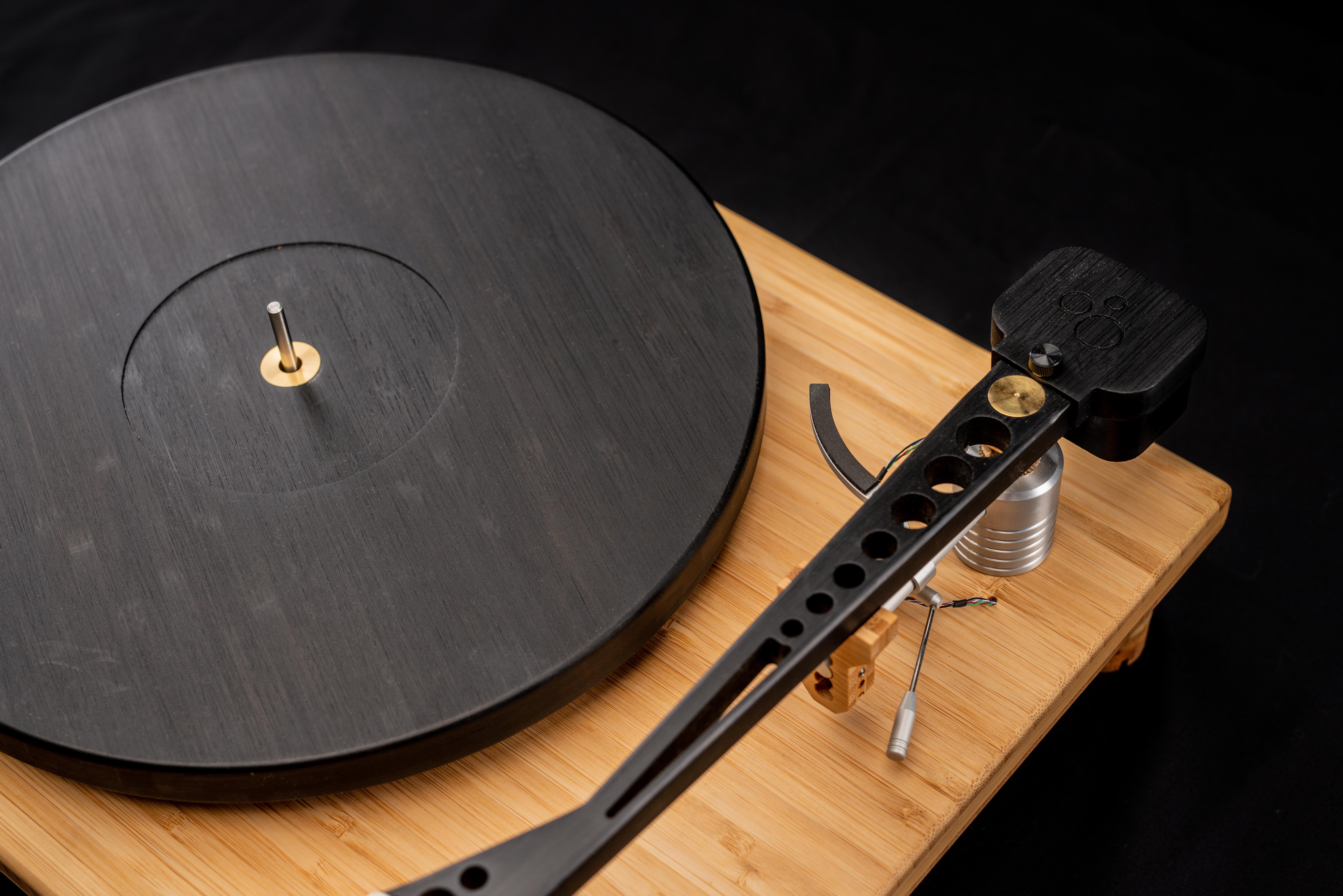
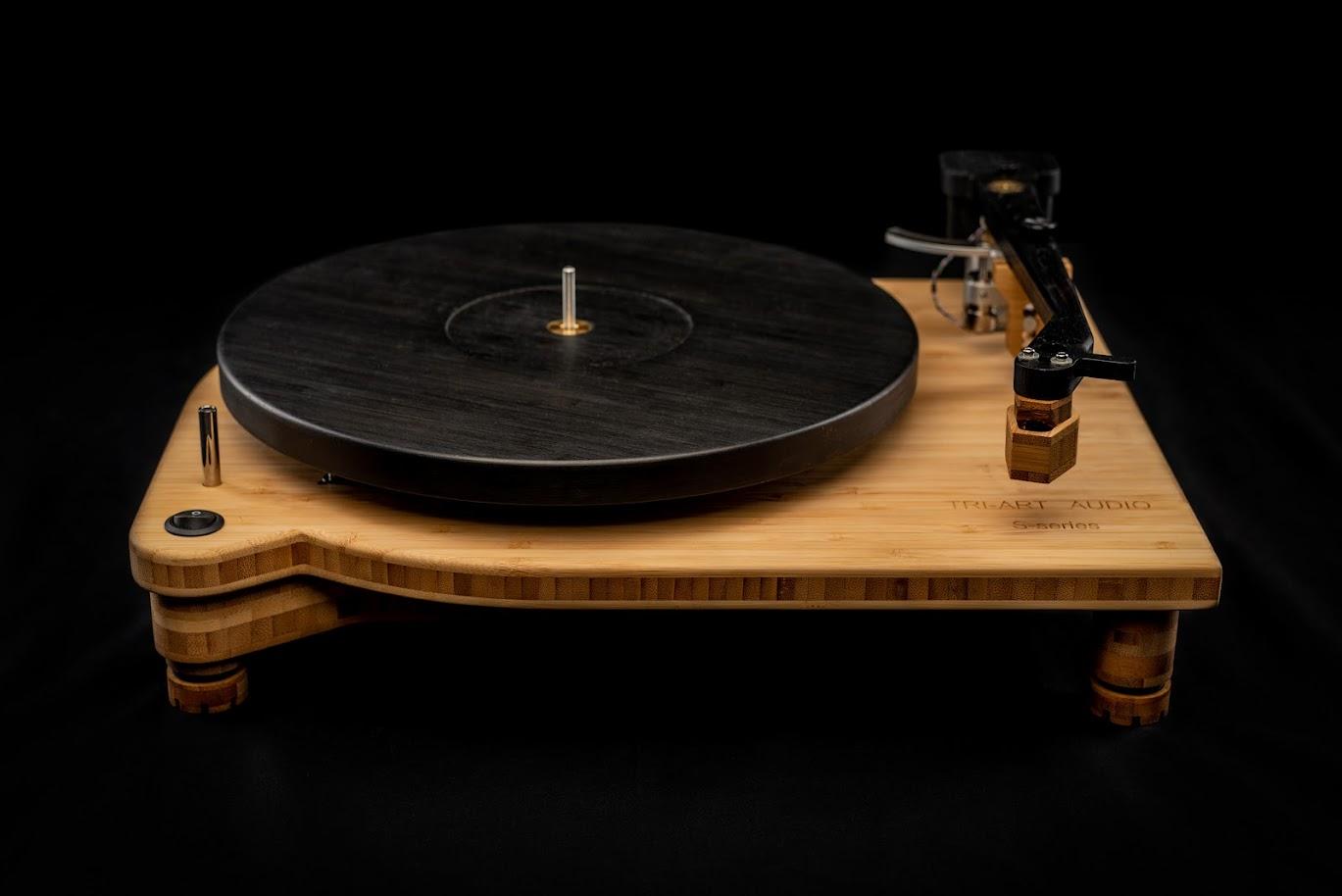
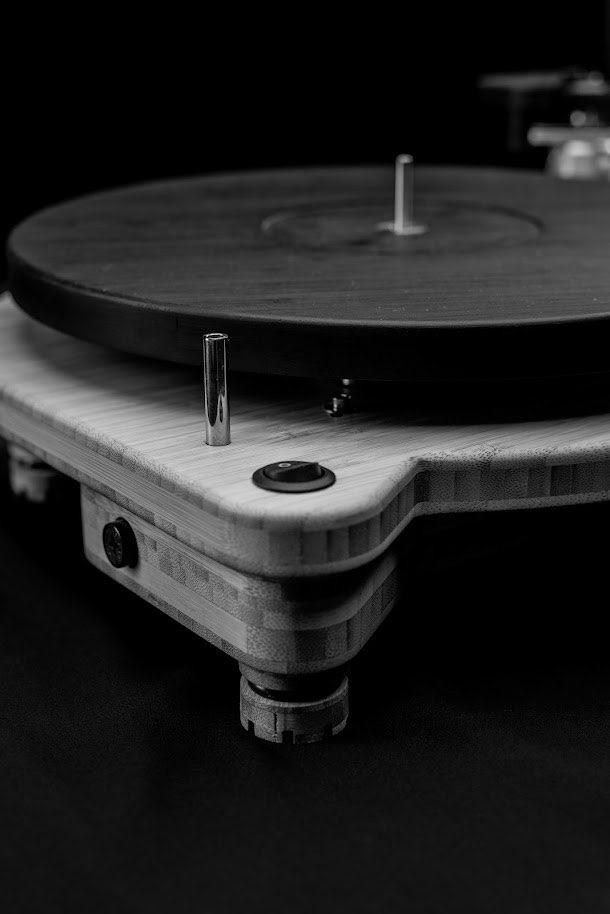
others from electronically reproduced streams of music into music that seemed present, personal, dimensional, and always very immersive. If I’ve had a similar experience, I do not, at this moment, remember it. Suffice to say that the Audionet Duo’s midrange is spectacular as well.
TREBLE
Let me reprise my experience with the Audionet PRE G2 and AMP with the TRIART OPEN 5, as the assembled “quintet” played through one of my go-to tracks in my Review Treble Mix—“Take Five” (Time Out, Columbia-Legacy). As I stated:
“I can’t remember the time this performance has been so transparent, so easily rendered, so real. I shake my head again at the TRI-ART OPEN 5s well aware that their price tag says, “Yeah, I know, we shouldn’t be able to do this. But, we are.” And I sit back and enjoy with complete awareness of that fact.”
You’ll find no treble acrophobia—fear of treble heights—with this quintet, as led by the Audionet duo.
I play once again Hilary Hahn’s “Sonata No. 1 in G minor: Adagio” (Hilary Hahn Plays Bach: Violin Sonatas Nos 1 & 2; Partita No. 1, Decca), just to make sure that I wasn’t imagining
things the last time out. True to form, Hilary’s violin is off in a flash to treble Alpha Centauri, free of grain and dissonance and breakup and sizzle and sibilance, and power
gliding beautifully. Did I mention that the Audionet Duo is solid state?
CONCLUSION
Spectacular! Not every day does a preamp and amplifier duo come into your life and raise the “living dead,” figuratively speaking, from their musical graves. Well, if you’ve made it this far, the reference to the “living dead” may well be clear. But I digress.
The Audionet PRE G2 preamp and AMP monoblocks are velvet hammers. Should the program material require them to access the stygian depths of the Holy-Bass-Head-Grail, they will take you there swiftly, as it is a path they know well. And in this respect, the Audionet PRE G2 preamp and AMP monoblocks are hammers. Yet should the material require a stratospheric rise to tip-top,


AUDIONET PRE G2 & AMP audiokeyreviewsCA.com
treble heights or a most proficient, beautifully resolved, and compellingly engaging vocal, you will be there. This skill is, of course, the velvet covering the hammer. I report this from much experience and having travelled often to the electrostatic world, where the Audionet Duo and the Tri-Art OPEN 5 appear to share a condo.
Without further ado, we happily award the Audionet PRE G2 preamp and AMP monoblocks our highest award—the DIAMOND AWARD—for excellence in regard to superb high-fidelity reproduction, musicality, and the required gravitas to make it work beautifully.

Pros: The marriage of power and finesse, highfidelity and musicality in a simple, clean, and beautifully designed package.
Cons: None.
THE SYSTEM(S)
• Grimm Audio MU1 Streamer
• Mola Mola Tambaqui DAC
• Bricasti Design M1SE
• Tri-Art Preamp & Monoblock Amps (100W)
• Tri-Art OPEN 5 Speakers
• Verity Otello Speakers
• Audience FrontRow Interconnects, USB, Ethernet Cables/Wires
• RSX MAX Power Cords
• AntiCable Power Cords
• Audience AdeptResponse aRS-T4 Power Conditioner

G2
AMP $18,350
2332 421
+1
THE COMPANY Audionet Audionet PRE
$23,250 Audionet
en.audionet.de +49 (0) 30
0 service@audionet.de DISTRIBUTION Bill Parish GTT Audio
908 850 3092 av@gttaudio.com www.gttaudio.com AKRM

 By Kathe Lieber
By Kathe Lieber
GRACE NOTES M
usic lovers are curious by nature, with a wide array of interests, and I’m certainly no exception. I’ve written about chocolate and cheese, architecture and history, theatre and wine—and of course, music. I love to do research and interviews, getting lost in books and online rabbit holes to extract fascinating details. Nearly every day, I wake up with a snippet of music or a cluster of words in my head and rush to the computer to start my research.
My grandmother, a concert pianist trained at the Kyiv Conservatory, instilled in me a deep love of classical music. From my father, an English teacher who also taught ecology before the concept was really understood, I inherited a deep love of language and an unturnoff-able editor’s eye. (Not sure where the hyphens belong in that term…hmmm…)
My column on this site will be far-ranging. Most of my favourite subjects are “musicadjacent”—addressing everything that contributes to the creation of a full and interesting life. A short list of potential topics would include the complicated connection between memory and music; how art enriches our lives; the history of musical instruments and genres; books that add another dimension to our music listening. I will also be writing brief backgrounders on the glorious art our Editor-in-Chief chooses to feature in the magazine.

Stay tuned—it’s going to be a fun ride!

audiokeyreviewsCA.com
 Vincent Van Gogh - Vase with Irises
Vincent Van Gogh - Vase with Irises
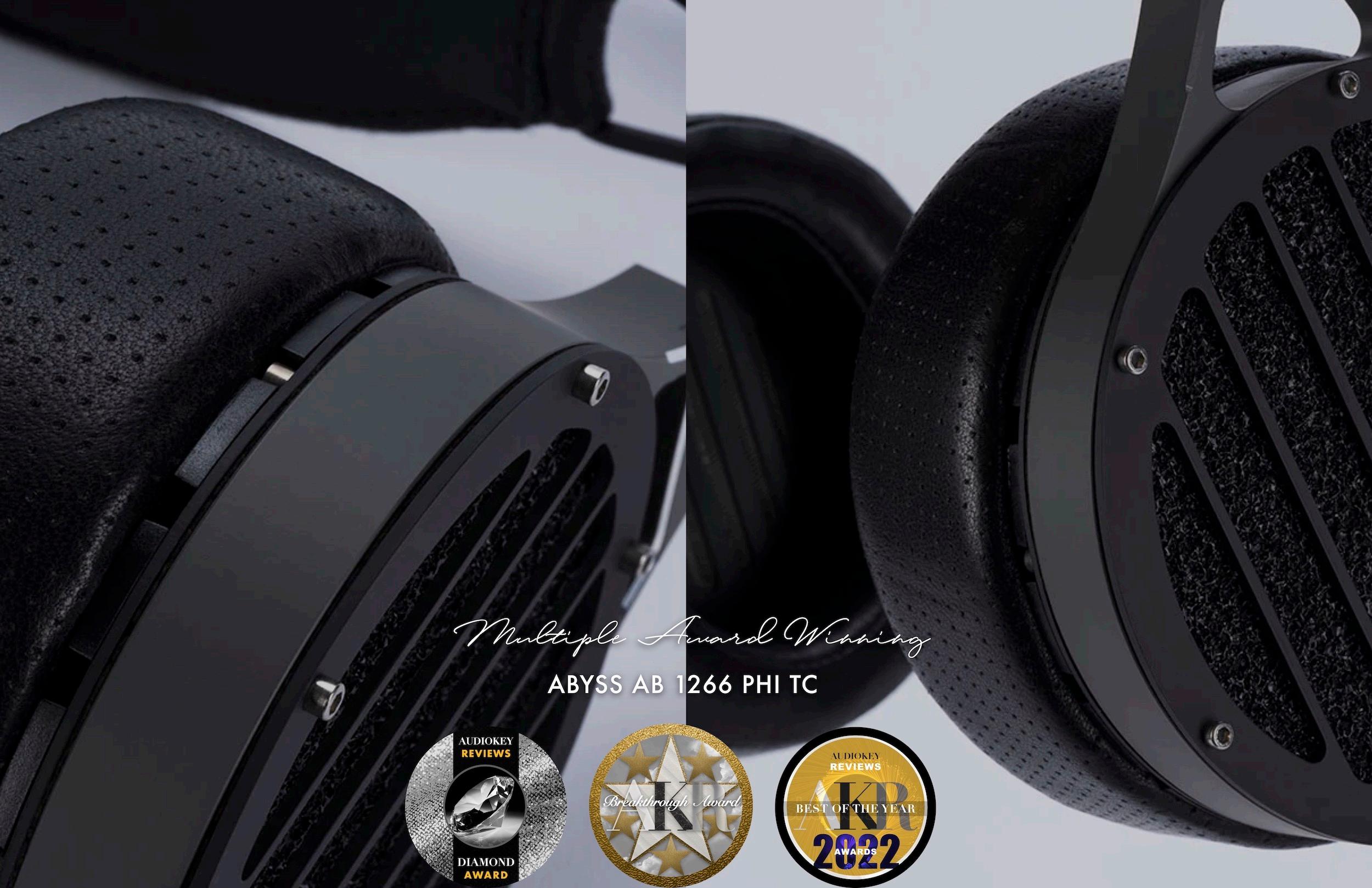


 Vincent Van Gogh - Green Wheat Field with Cypress Tree, 1889
Vincent Van Gogh - Green Wheat Field with Cypress Tree, 1889

MERASON FRÉROT & POW1
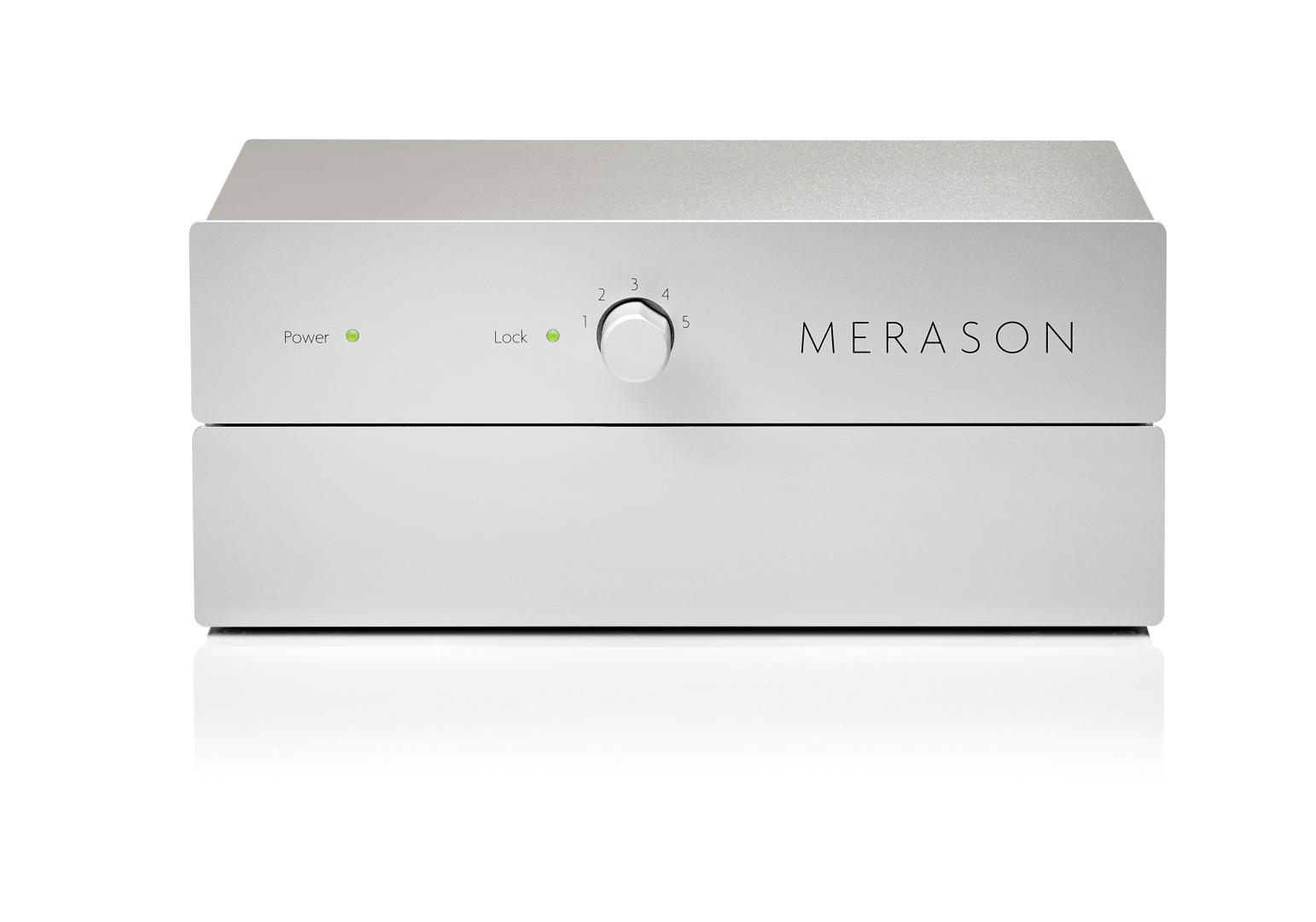 By Oliver Masciarotte
By Oliver Masciarotte
REPRISE

MERASON FRÉROT & POW1
COLOR ME STUBBORN
Ihave to admit to an enduring prejudice, having spent much of my career co–developing and promoting products that support the current common HRA or High Resolution Audio sample rates; 8 times 44,100 and 48,000. The former “44.1” is the


“magic” somehow embodied in analog tape, vacuum tubes and vinyl. Why, pray tell, am I telling you all this? Read on, gentle observer…
One of the many reasons why pro audio companies pushed the technical boundaries of sample rate, inching ever upward from that
Compact Disc sample rate, while 48k is the base digital video rate. That math comes out to 352.8 and 384kHz respectively. For music consumers, 4x 44.1 or 176.4kHz is a very high precision recording and playback format, and is easily downsampled without heroic mathematical efforts to 44.1k. When done carefully, 4x digital audio easily surpasses even the best analog in terms of measurable and, for me, subjective performance. Recent discoveries in DSP or Digital Signal Processing have even managed to capture the
first 44,100 samples per second “Red Book”
CD standard, was to increase the bandwidth or highest frequency that can be stored. Analog tape can encode quite high frequency, but it’s buried in steaming heaps of noise, so engineers wanted to do better. Starting with the initial “R–2R” or “multibit” digital–to–analog converter (DAC) designs, the process of transforming a stream of discrete numbers back into a continuous analog signal gradually improved to the point where now we have “delta–sigma” oversampling DAC chips with exceptionally good sounding (and measured) performance. All that blather leads me up to

audiokeyreviewsCA.com
 Vincent Van Gogh - Window in the Studio
Vincent Van Gogh - Window in the Studio
MERASON FRÉROT & POW1 MERASON FRÉROT & POW1
the actual topic at hand; Merason’s $1350 frérot + $950 pow1 USB DAC plus linear power supply. The frérot take a minimalist approach in keeping with the Merason motto of “Weniger ist mehr” or less is more. Rather than using a state–of–the–art, delta–sigma chip, the frérot leverages a now nineteen year old


consultancy Niedal Audio Lab, believes that your ears, not specs, should be the final arbiter, and the old ways are best even when dealing with digital. His two piece, mid–priced frérot DAC plus pow1 external power supply are as free of clutter as they are of features. The frérot has two front panel LED indicators, one for
design.
HICK’S LAW
Some DACs or Digital–to–Analog Converters allow you to dive deeply into their digital heart. The owner may decide to try different anti–image filter topologies‡ or to choose a solid or hollow state input stage. Choice is good…up to a point. Increased numbers of possibilities increases the amount of time it takes for someone to reach a decision. Welcome to Hick’s Law, where more options increase the time required to make a choice. With the Merason frérot, one need not worry. Its designer, Swiss engineer Daniel Frauchiger and founder of both Merason and OEM
power and another for input lock. The only other fascia property is a four–position rotary input selector. That’s it, Doctor Hicks. No information overload here.
Though the frérot can be powered from an included external 9v wall wart, for this review the much cleaner companion pow1 PSU was supplied. On the rear panel are balanced and unbalanced outputs, along with two AES-3 unbalanced digital inputs on RCA, two AES-3 optical ins on F05, and a single USB Type A socket for connection to a computer. For this review, I ignored the inferior, jitter–prone optical ins as well as the AES digital inputs, and focused solely on the frérot’s USB input.
Certain folks are driven as much by their eyes as they are by their other senses. I am not one of them. I’ll always appreciate an excellent example of industrial composition, but it’s the sound that really matters. Some companies also travel along a different path, a minimalist approach where many choices are made
released in the Digital Dark Ages circa 2003. Each chip is capable of stereo operation but is wired to provide a single channel for an extra 5 decibels of decreased noise floor.

LE COEUR DE MON FRÉROT
The Burr–Brown division of Texas Instruments (TI) refers to their 1794 as an “ultra high
44.1k samples per second on up to 192k or 4 x 48kHz. En français, frérot means “kid brother,” and the frérot DAC shares an old skool converter with his big brother, the DAC1. Both products employ Burr–Brown’s 24 bit PCM1794A monolithic DAC chips, first
each optimized for a different role. One DAC handles the MSBs or most significant bits, the loud stuff, while another handles the quiet LSBs or Least Significant Bits. The outputs of the two “segments” are then added together for the final signal. The 1794 implementation sits

audiokeyreviewsCA.com
MERASON FRÉROT & POW1

between delta–sigma and multibit, with a 6 bit delta–sigma segment for MSBs and an 18 bit, multibit approach for LSBs. The frérot presses a discreet Class A transimpedance amplifier into service to convert the DAC chip’s current output to a voltage with enough gain so your power amp is happy. Also serving the goal of better sound, all input signals are galvanically isolated to suppress noise, and the balanced outputs are realized electronically with, as distributor Mark Sossa wrote, “…four independent channels from the output of the two converter chips to the output of the frérot.”
IN USE
Discussing tech is one thing, but what does the frérot plus pow1 actually sound like? After level matching my exaSound with the frérot, I started my explorations by enlisting Malay jazz keyboard prodigy Joey Alexander. After digging into his wonderful (as my child would say, “Literally!”) 2020 release Warna to get my bearings, I moved ahead to this year’s Origin [both Qobuz 96k]. The first thing that struck me was the differences between the two recordings. The older recording exhibited a compressed soundstage, with the piano snuggled up in front of the drums. Origin had a more believable, more defined, ambient soundstage with a more contemporary sonic signature. The frérot nicely delineated those differences, while presenting a relaxed, well balanced sound in keeping with Alexander’s evolving composition and band leadership.
What I first thought was loss of top-end extension and air turned out to be something far more subtle and interesting; texture and the “space around the notes.” Many folks hold the opinion that “digital” has a harsh and unpleasant sound quality relative to “analog.” Comparing the Merason with my $3k exaSound, which is based on ESS Technology’s Sabre delta–sigma DAC chip, clearly illustrates the differences. On Tank and the Bangas’ 2022 R&B album Red Balloon [Qobuz 44.1], vocals on the track “Stolen Fruit” have a modern scratchiness, what sounds to me like Pro Tools’ misshapen fingerprint. The Merason polishes off the raspiness without removing detail. At the same time, it spackles over some of that space in between the notes. In comparison, the exaSound retains the unpleasant texture but communicates more of the emptiness between each aural event. Two contrasting approaches to rendering the same data, subjectively quite similar to a smoother DSD version when compared to a sharper PCM version of the same song.
One band I revisit a few times a year is Dire Straits. The newly released compilation, Money For Nothing [Qobuz 192k], affords a fresh view into the brilliance of both band and Bob Ludwig’s mastering. The acerbic tongue in cheek title song, not to mention its pioneering Minecraft–style music video, is a perpetual delight. During this listen, I was focused on Mr. Stingy’s vocals when I noticed the cowbell that shows up near the end…more cowbell! Seriously, perceived transient response, guitar
bite and vocal fry, are telegraphed from the frérot with a more velvety touch that my converters with delta–sigma hearts. There were two other aspects that I sought for a better understanding of Daniel Frauchiger’s view of sound quality; air and ambience. I think of air as the very top of our perception, those very high frequencies and yes, ultrasonics, through which I am informed of distances, room boundaries and a certain hint of reality. A 176.4kHz sample rate will encode half that frequency, or 88.2kHz, which captures ultrasonics nicely without undo temporal distortion. Listening to 176.4kHz
HRA recordings from engineers Morten Lindberg (2L) and Dr. Keith Johnson (Reference Recordings), I found the frérot to not be the champ at conveying airiness, but it does paint a finely textured picture nonetheless. By the way, at the other end, the frérot holds its own in the bottom octave.
CONCLUSIONS
Despite my misgivings about outdated tech, there were no instances where I felt the frérot + pow1 was left wanting. The design path that was taken results in a refreshingly straightforward solution for digital audio playback. The combination of very reasonable price and high performance should be embraced by the vast majority of audiophiles, who cannot afford to trade in their car to fund a DAC purchase. Plus, it’s the opposite of a typical budget priced DAC, where so many features are packed in by the marketing
department that it purposefully boggles the mind of inexperienced buyers. The frérot + pow1 deliver that essential and elusive audio quality; verisimilitude. Pair it with other better quality components, and you have the makings of a very high performance and potentially modestly priced two channel system. Personally, I can attest to the match with a more forward speaker to provide some balance and restraint. In my case, it was the set of Starke Sound IC-H1 Elite bookshelfs I had in–house during this review, but could have just have easily been a pair of Joseph Audio or Von Schweikert speakers, examples with aggressive “detail.” As a self confessed effete digital audio snob, I was pleasantly surprised by the easy going presentation, welcome simplicity and outstanding value of Merason’s frérot and matching pow1.
ADDITIONAL GEAR:
Source — Amarra Luxe
Amplification — Parasound JC 5
Conversion — exaSound e22 Mk. II

Cabling — ANTICABLES Level 3.1 speaker, Soundstring GEN II Beta 2-22S XLR, VUE
Cables Digital VU-3 USB MERASON
merason.com
AKRM


 Georges Pierre Seurat - The Stone Breakers
Georges Pierre Seurat - The Stone Breakers





LS1 www.grimmaudio.com
These are the most immersive, dynamic, detail-rich, nuanced, elegant, engaging, emotional, and yes, musical speakers I have ever heard. By far.
Timothy Roth, Positive Feedback
By K. E.Heartsong

SILENT ANGEL MUNICH M1



&FORESTER F1
no time to enjoy it all. It reminds me of a Twilight Zone episode—“Time Enough at
audiokeyreviewsCA.com


ILast”—and Henry Bemis’s predicament with books. Hmmm.
On my part, I give it my best shot each and
flowering as well, all over the world. This
FORESTER
MUNICH M1 &
F1
 Henri Matisse - The Cat with Red Fish
Henri Matisse - The Cat with Red Fish
MUNICH M1 & FORESTER F1
burgeoning symbiotic combination clearly sets us in the time of GAMA.
I’ve recently come across a company that has fully engaged in making GAMA more accessible to us all from the perspective of technology, high fidelity, and toward the discovery and enjoyment of that universe of music. That company is called Silent Angel, which seems a most appropriate moniker for the task it now undertakes.
To date, I have reviewed their stellar Rhein Z1 streamer and Forester F2 Linear Power Supply, which together rose to the level of our GoldKeyNote Award, no small feat. Today I review its younger siblings, its baby brothers— Silent Angel Munich M1 and Forester F1— which resemble Tiny Tots in relative size. But how do these Tiny Tots sound?
REFRAIN: Unlike most reviews, this review will be non-sequential, as it will start, below, with how the equipment actually sounds and not the process of physically “undressing” it and/or laying out its various parts, specifications, etc. Think of this review then, as a non-linear movie—Memento, Kill Bill, Arrival, Eternal Sunshine of the Spotless Mind, The Terminator, In the Shadow of the Moon, The Queen’s Gambit, etc—that, likewise, starts at the end and winds its way to the beginning.
THE SOUND


As I mentioned in the write-up of the HeadAmp GS-X Mini relative to its
“older”sibling—Blue Hawaii Special Edition E/HPA—“The beautifully constructed ‘apple’ does not, apparently, fall far from its technological tree.”
The overall sound of the Munich M1 mirrors this in many ways and embodies good transparency and resolution and detail, especially so for the price. This too was a trademark of its siblings. However, the M1 was not quite able to broach the exceptional in terms of sound. One imagines at its construction/price point that that was not its purpose. Once the Munich M1 was coupled to the Forester F1 Linear Power Supply (combined pricing: $2,049), however, the duo’s collective abilities rose very very nicely and led to many enjoyable and engaging listening sessions.
The Silent Angel Munich M1 and Forester F1 volumetric cube—their soundstage—or how they recreate the original venue of a given package of information—track, song, album, etc.—is quite good and very musical. Staging— positioning, spacing, layering,—is also quite good or rather exemplary for an entry-level product. And everything, and I mean everything, improved once the Forester F1 power supply was linked to the Munich M1.
The Silent Angel Munich M1 ($1,199) and Forester F1 ($850) were paired for review with the Border Patrol SE-i and the DENAFRIPS
Pontus II DACs. The headphone amps employed were the Aurorasound HEADA and the HeadAmp GS-X Mini. Headphones used were the Abyss AB1266 Phi TC, the ZMF
audiokeyreviewsCA.com
Atrium, the ZMF Vérité, and the Meze LIRIC. Audience Front Row wires and AntiCable and
via the Munich M1 alone is good, yet the weight of the prior and more expensive Silent
I repeat one of the bass tracks that was used with the Silent Angel Rhein Z1 and Forester
F2 combo— Mercedes Sosa’s, Misa Criolla (Universal Music Argentina S.A.). The playback
and the choir is more ephemeral from the perspective of weight.
Connecting the Forester F1, however, provides greater bass weight that is now

MUNICH M1 & FORESTER F1
tighter, better resolved, and better defined. The soundstage has deepened and there is much greater clarity, which in turn provides more immediacy. And the choir has again become a rather potent part of the mix, as aligned behind Ms. Sosa. That the tiny Forester F1 impressive and speaks to its absolute necessity, in my opinion.
MIDRANGE



Patricia Barber’s “The Moon” (Verse, Koch Records) plays and there is a good bit of sibilance apparent across the track, one of the reasons it is a midrange test track. The Silent Angel Munich M1 handles this fairly well. There is good resolution, good staging; bass, however, is only reasonably proficient but not
as properly defined as I am used to hearing and there is a lack of intimacy.
Once again, with the addition of the Forester F1 the overall volume of the soundstage expands, with greater clarity and immediacy. Bass is tighter, better resolved, and are all more apparent and there is more air and more intimacy. It is, again, a marked improvement over the Munich M1 alone. Truthfully, the price to performance/ improvement ratio is both interesting and compelling.
TREBLE+
Lara St. John’s “Gypsy Nocturne” (Gypsy, Ancalagon) opens now via the Munich M1 and the notes of Lara’s violin make their skyward

audiokeyreviewsCA.com
climb, but it lacks the power, confidence, or resolve of its much more expensive brethren. That is, of course, to be expected. The piece is still handled well, and those who are not aware of the Rhein Z1 and Forester F2 may well be quite pleased. It is a good performance, actually quite good, not great.
With the Forester F1 again in the mix, high fidelity reproduction and musicality rise and the violin’s climb to the stratosphere again takes on good speed, is less hampered, better resolved, and with more gravitas—weight. There is also a good measure of delicacy, nuance, and sweetness that have returned via the F1, and now it approaches a great performance. I shake my head at the simple connection of the umbilical cord between the two Silent Angel products and the immediate
CONCLUSION
The Silent Angel Munich M1 and Forester F1, the Tiny Tots, while quite small, represent an ideal entry-level streamer, linear power supply duo. The value to cost ratio is very good at a combined price for the Tots of $2,049. The Munich M1 will easily compete with your computer, but it will need the Forester F1 LPS to bring things to equal with the Roon Nucleus Plus, though it will surpass the Nucleus Plus as a duo with regard to musicality and naturalness and ambiance. In short, the Silent Angel Munich M1 and Forester F1s provide a great deal of music and technical/high fidelity skills for a relatively low cost.
The Silent Angel Munich M1 and Forester F1 are highly recommended for those who are brand spanking new to streaming or those who are looking for a better, more immersive streaming experience or more bang for their buck in relation to their current system, which just might be more expensive.
Pros: Very good price to performance ratio, compact, easily transportable, teeny tiny.
Cons: None. award status.
THE COMPANY
Thunder Data Co., Ltd.


Silent Angel Munich M1 $1,199
Silent Angel Forester F1 $850
www.silent-angel-audio.com
AKRM

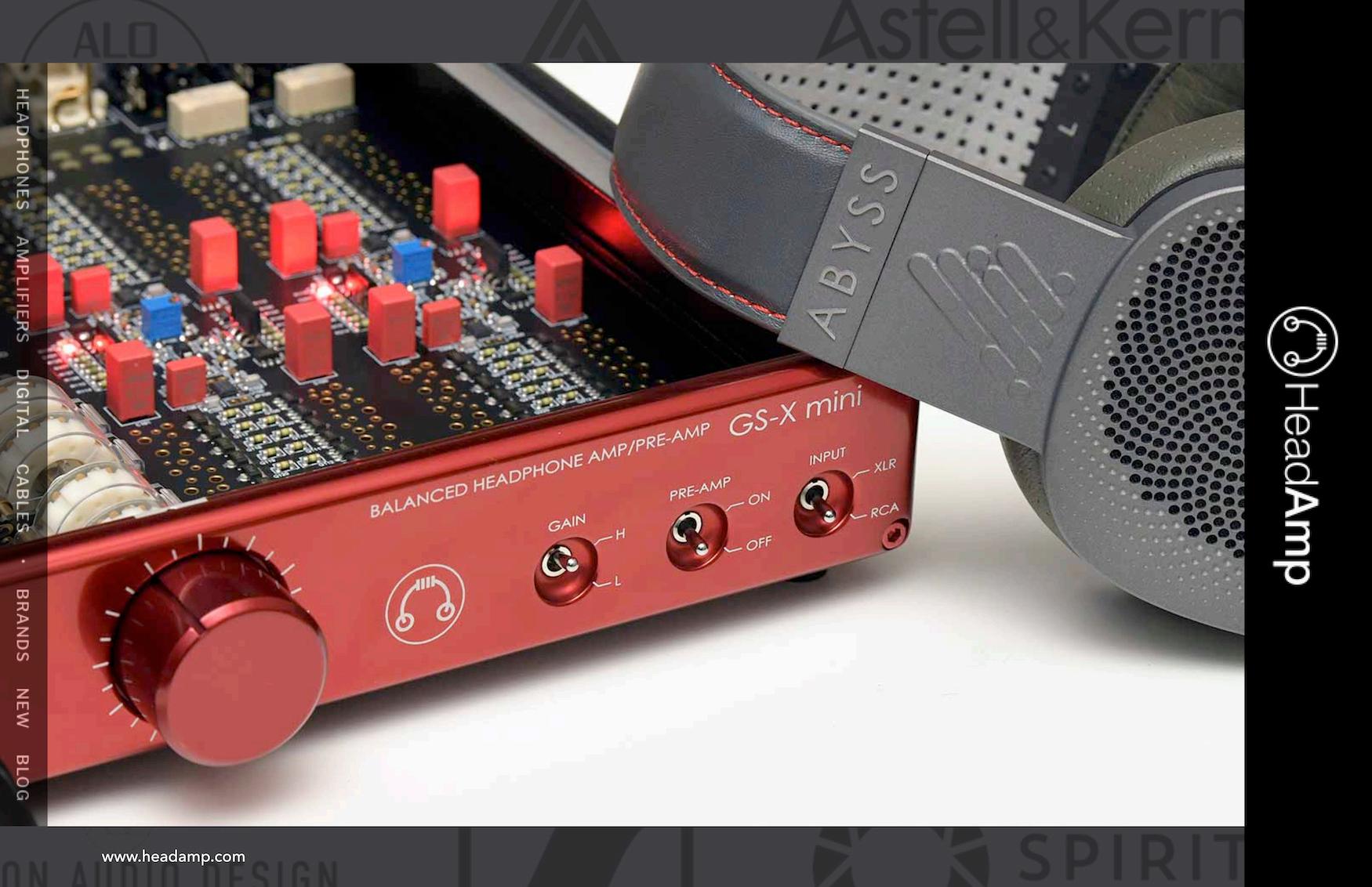



\
Claude Monet - Water lily and Reed

VERITY OTELLO
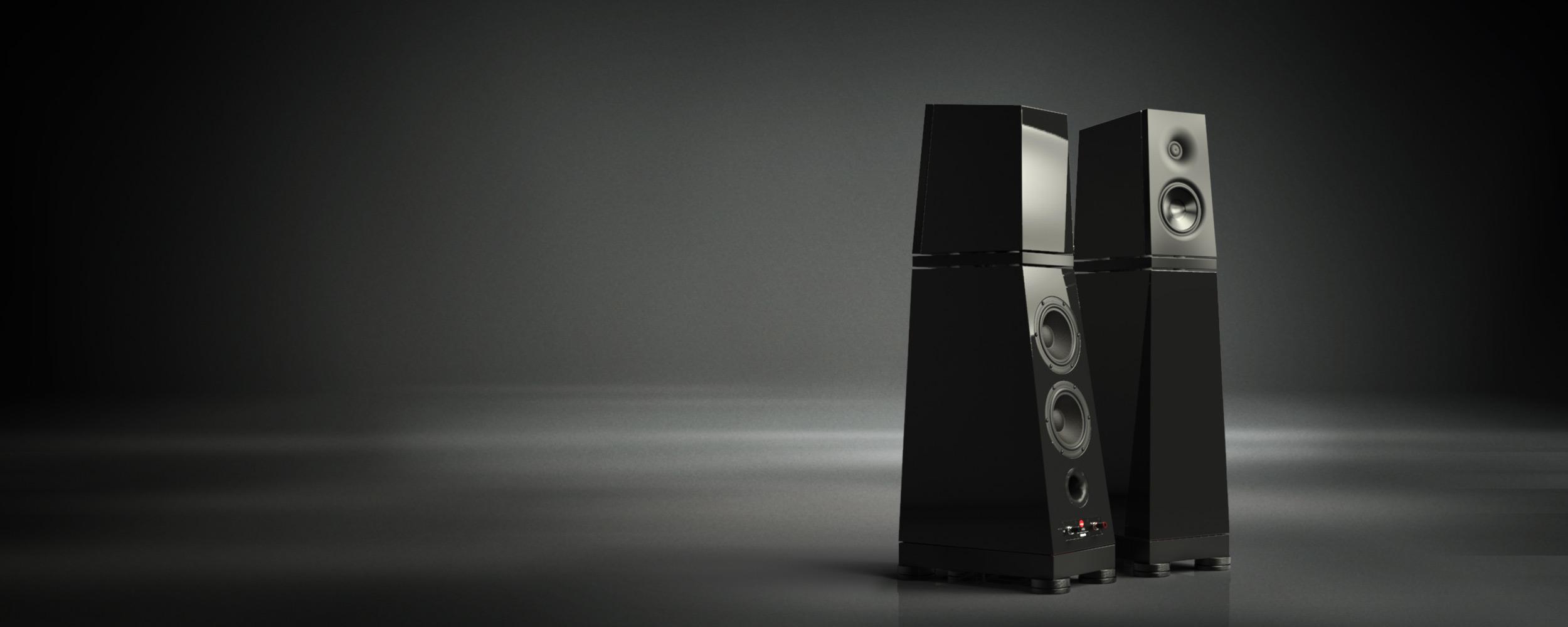
PREVIEW
By K. E.Heartsong

VERITY OTELLO
Ifirst encountered Verity Audio via its Parsifal loudspeaker nearly two decades ago. Here was this piano black beauty, unique in its makeup—an interchangeable, separate bottom cabinet capable of being pointed forwards or backwards, with a separate, detachable monitor on top—and, at the time, this was Verity’s reference speaker.
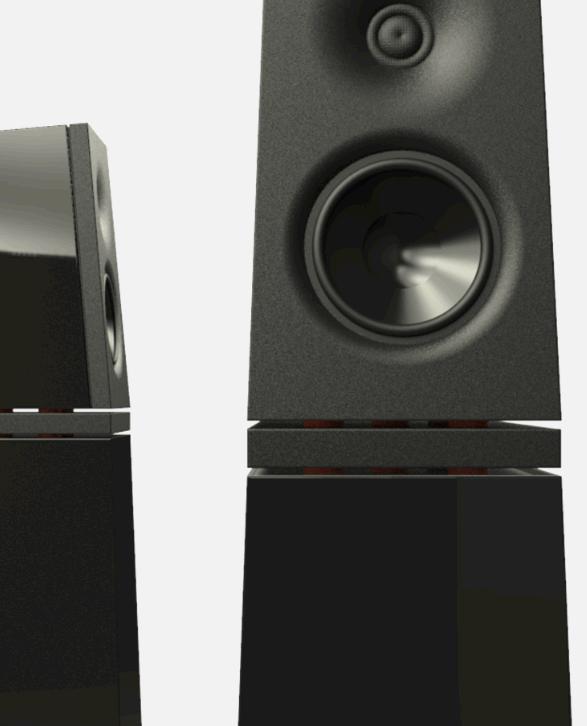

The Parsifal, as mentioned, sported two distinct cabinets separated, if I recall correctly, by an organic material, that tamped their interaction. The tweeter and a five inch midrange took up residence in the upper module, while a single eight inch woofer lived in the much larger bottom cabinet. At the time it was also possible to purchase the upper module/monitor separately.
Well, when I finally sat down to listen to the Parsifals, their overall fidelity, musicality, their ability to reach deeply into the soul of the music, most certainly in the midrange, captivated me entirely. Apparently Verity’s research and design endeavor had been proven entirely successful and here was the “proof in the pudding”, so to speak.
In the end I would, personally, settle on the Verity Fidelios, another truly talented speaker, ‘younger’ sibling to the Parsifal, and

missed to this day. The Parsifals were out of my range price wise or, perhaps, my radar, whereas wheels—nice cars—were not at the time. I did indulge to a great degree and the brakes on the S500 were fantastic, I still remember them too.
Fast forward to today and another sibling of the Parsifal—the Otello—finds itself aligned to my two-channel reference system and waiting most patiently to be heard and reviewed. I, on the other hand, have not been feeling so patient and once the three(!) magazines have been put to bed, shall indulge immediately.
The pair of Otellos which wait are finished in that Verity Makore wood, which is ‘collector’ grade furniture, beautiful, of optimal size for small apartments (one imagines, as my place is not small), and in the sweet-spot of spousal acceptance.
Well, as there is a talented coterie of players waiting to make music with the Verity Otello, I do believe that this will be a good deal of fun.
Verity Audio

Otello, Makore Wood: $19,795
info@verityaudio.com
verityaudio.com
audiokeyreviewsCA.com
PREVIEW
AKRM

 Imogene Cunningham - Untitled
Imogene Cunningham - Untitled
 SIMAUDIO ACE &
VOICE 22
SIMAUDIO ACE &
VOICE 22

By Charles Brown PREVIEW

PREVIEW
With the efficiency one has come to expect from UPS, my Moon Neo Ace Integrated Streaming Amplifier with the new MoonVoice 22 speakers arrive on my front porch, on time, and beautifully and efficiently packaged from SIMAUDIO, Canada. (God bless these unsung men and women who are the heroic actors to the movement of goods in the modern economy.) Hauling my prize possessions downstairs to my man-cave, I had everything set up including the extra sources and Bluetooth option to my iPhone 10 and was playing Brad Meldhau’s After Bach album through the ACE and through the Voice 22s before I imagined all of this possible. After this it’s letting the system begin its 400 hours of “warm-up”.
With my review in April, I will offer you an intimate look and listen into the Canadian Audio manufacturer, Simaudio’s, long awaited Moon Voice 22 two-way book-shelf designed speakers, the speakers created specifically for the Moon Neo ACE integrated streaming amplifier. Simaudio has been in the hi-fi business for forty years, yet has never built a speaker---until now! In a public interview, Costa Koulisakis, the Director of Moon training program tells us why. In his visits with Moon’s retail distributors, the question arose quite often, what speakers would pair well with the Moon Neo ACE? Cautious and aware of
electronic companies who have dabbled with the loudspeaker construction side of their business, and had not been successful, whether that be for engineering or commercial reasons, Moon has been very hesitant to build a loudspeaker. However, the idea of creating a Gestalt model of hi-fi integration where your Moon Neo ACE Integrated Streaming Amp, an acronym which stands for “A Complete Experience”, is harmonized with its own specially designed speakers----well, that type of integration was simply too good to say no to. So Moon made the plunge. And we’re glad they did. I look forward to introducing you to the dynamite trio from Simaudio in April. See you on the other side.
SIMAUDIO
SIMAUDIO ACE: $4,200 US
SIMAUDIO Voice 22: $3,200 US


SIMAUDIO Voice & Ace combo: $7,000 US
simaudio.com

AKRM
SIMAUDIO ACE & VOICE 22 audiokeyreviewsCA.com



Brassai - Retrospective in the Netherlands

Vincent Van Gogh - Rest after Millet

IN THE NEXT ISSUE


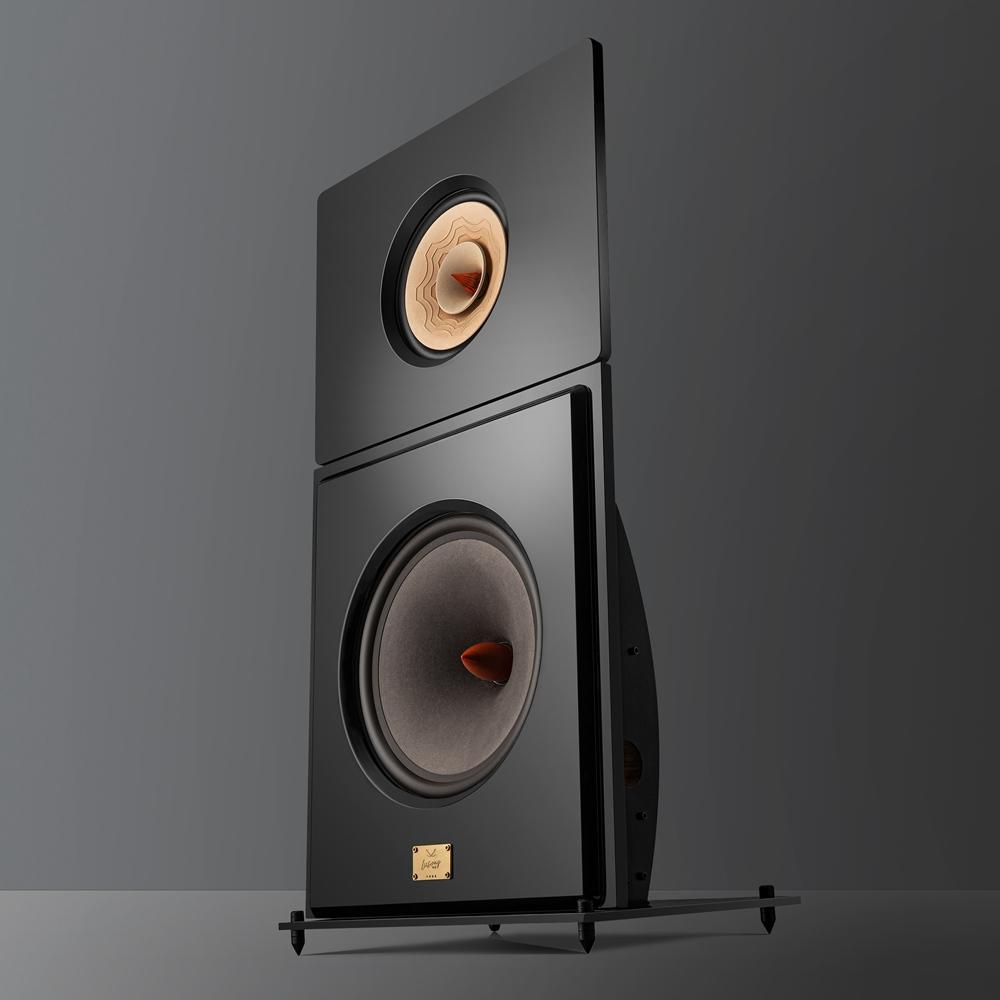



audiokeyreviewsCA.com 3 4 1 2
MAY

AUDIO
1. LII SONG LIIONIDAS EXTREMA
2. TRI-ART PREAMP & AMPLIFIER (100W)
3. SIMAUDIO VOICE & ACE
4. VERITY AUDIO OTELLO
5. TRILOGY INTEGRATED (not pictured)
6. RSX MAX POWER CABLE (not pictured)
INTERVIEWS
VIDEO REVIEWS
7. AND other reviews, columns, interviews, videos, etc. 1, 2023
MUSIC


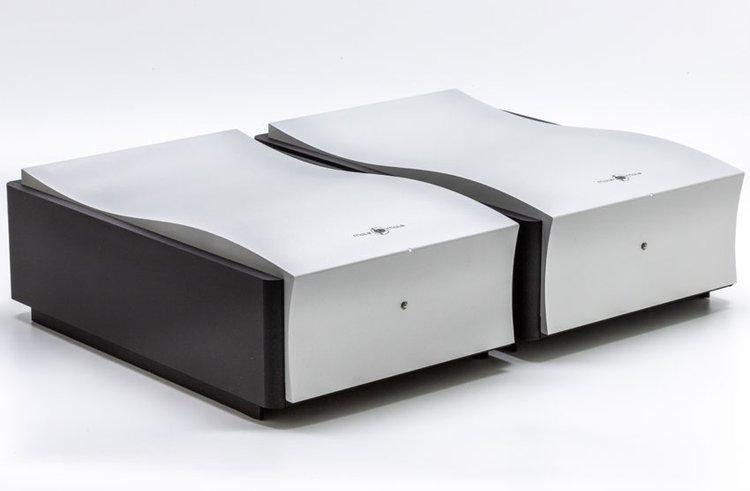


REVIEWS ON OUR WEBSITE audiokeyreviewsCA.com MOLA MOLA KALUGA VIVA EGOISTA STX HPA



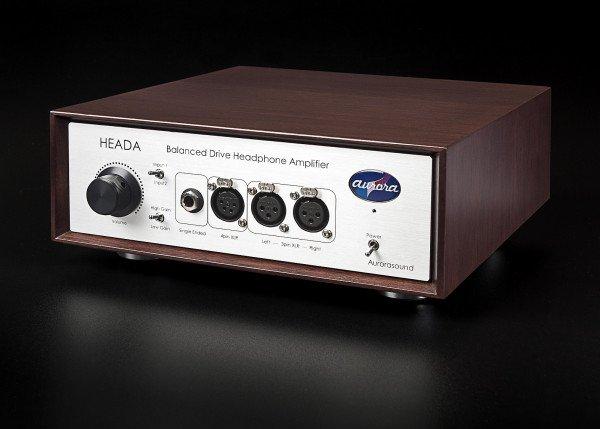

HEADA HEADPHONE AMP
GRIMM AUDIO MU1 STREAMER
Music is art, art is music.

SPONSORS,WE SALUTE YOU!

ABYSS HEADPHONES
ANTICABLE AUDIO ART CABLE
AUDIENCE
DAN CLARK
GESHELLI AUDIO
GRIMM AUDIO
GTT AUDIO
HEADAMP
HERMAN MILLER
HIGHEND-ELECTRONICS
MADLY AUDACIOUS CONCEPTS
MAPLE HIFI
MOLA MOLA MYTEK
TORUS POWER
TRI-ART AUDIO
audiokeyreviewsCA.com

audiokeyreviewsCA.com
Thank You

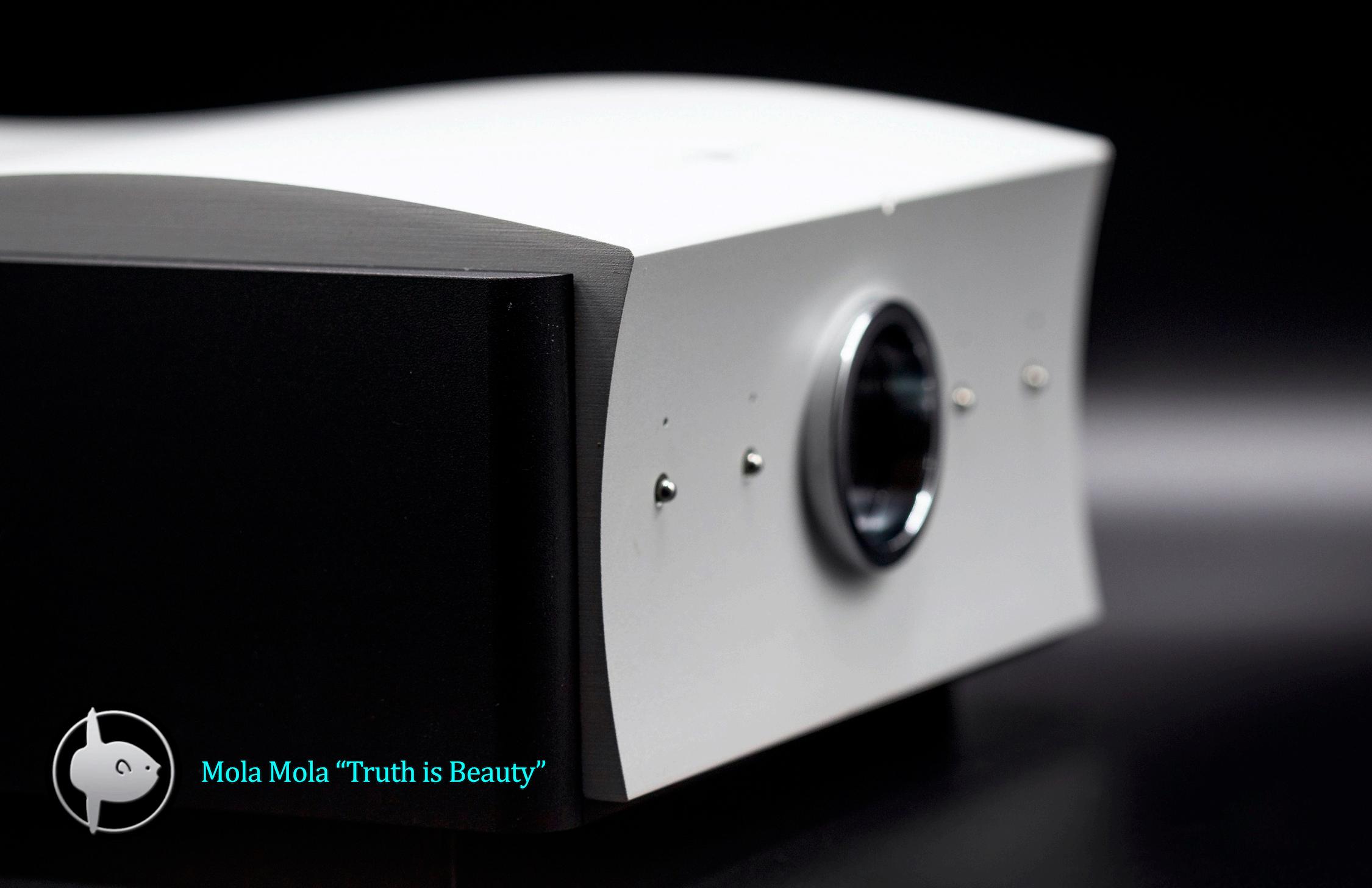













 Brassai - Pont Neuf
Brassai - Pont Neuf
























 HermanMiller
HermanMiller

 Paul Cezanne - The Road
Paul Cezanne - The Road





 Paul Cezanne - Pommes sur un linge
Paul Cezanne - Pommes sur un linge





 Tamara de Lempicka - Young Lady with Gloves
Tamara de Lempicka - Young Lady with Gloves














 Vincent Van Gogh - Vase with Irises
Vincent Van Gogh - Vase with Irises


 Vincent Van Gogh - Green Wheat Field with Cypress Tree, 1889
Vincent Van Gogh - Green Wheat Field with Cypress Tree, 1889
 By Oliver Masciarotte
By Oliver Masciarotte



 Vincent Van Gogh - Window in the Studio
Vincent Van Gogh - Window in the Studio




 Georges Pierre Seurat - The Stone Breakers
Georges Pierre Seurat - The Stone Breakers






 Henri Matisse - The Cat with Red Fish
Henri Matisse - The Cat with Red Fish








 Imogene Cunningham - Untitled
Imogene Cunningham - Untitled


















